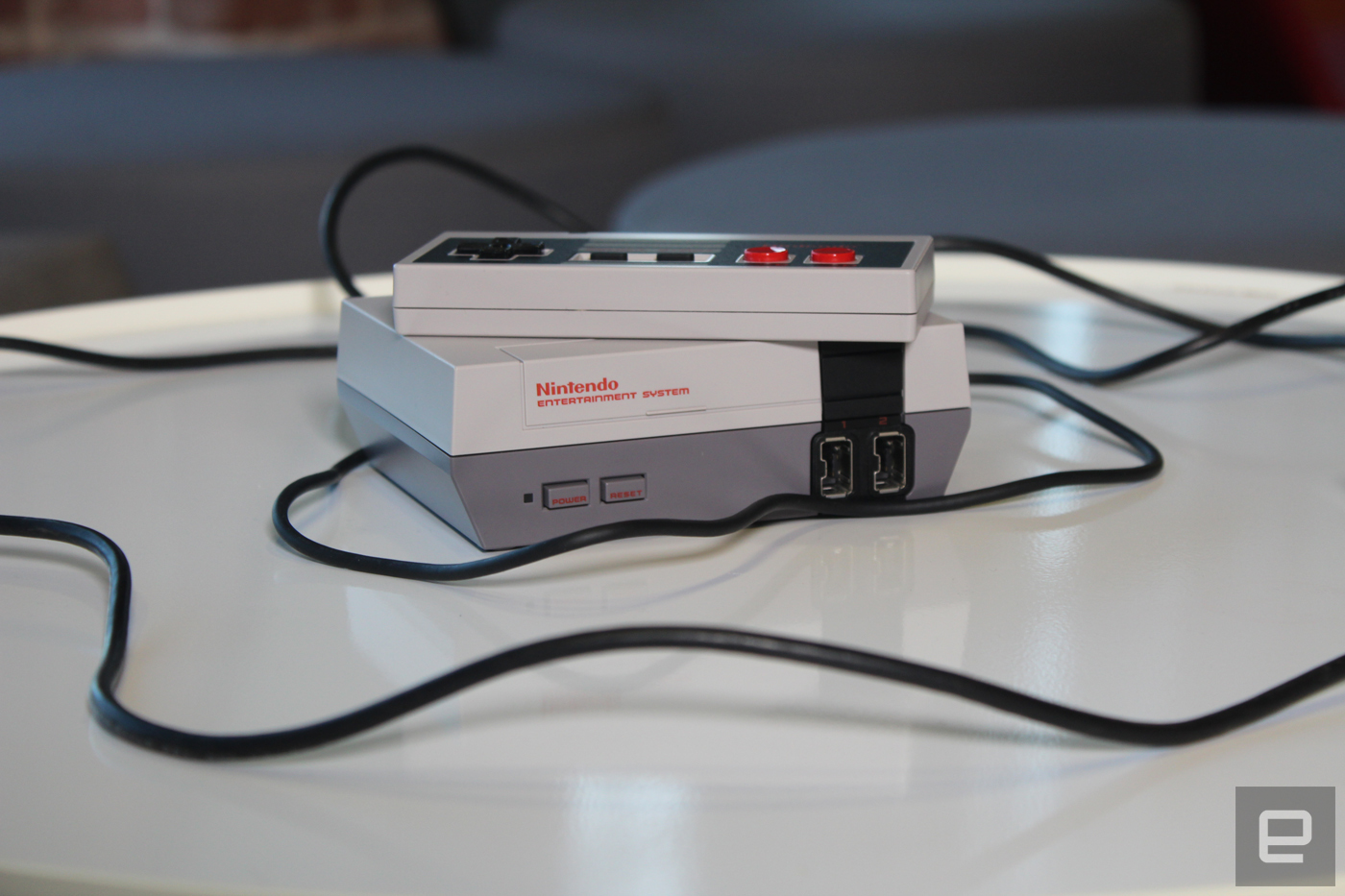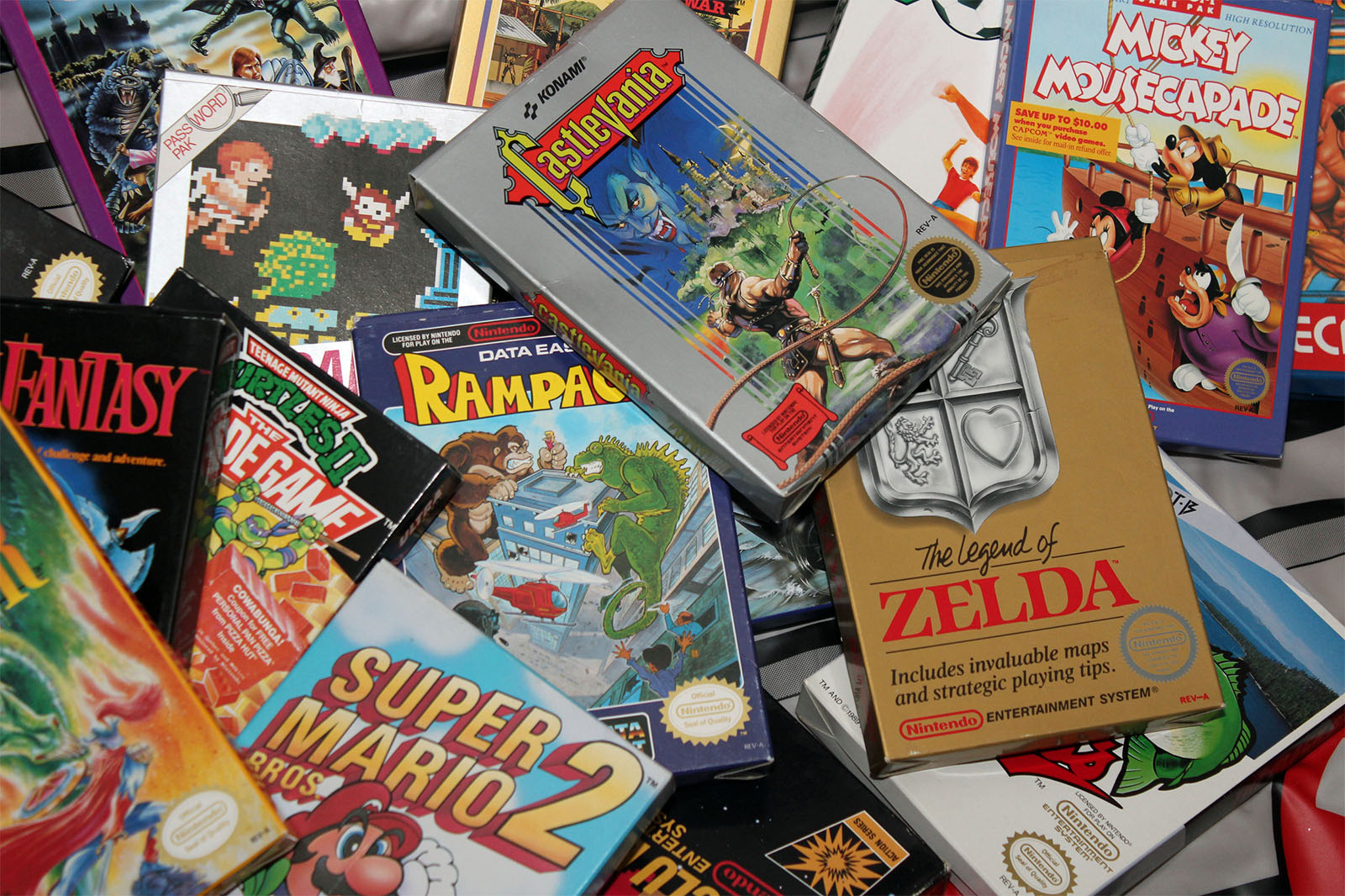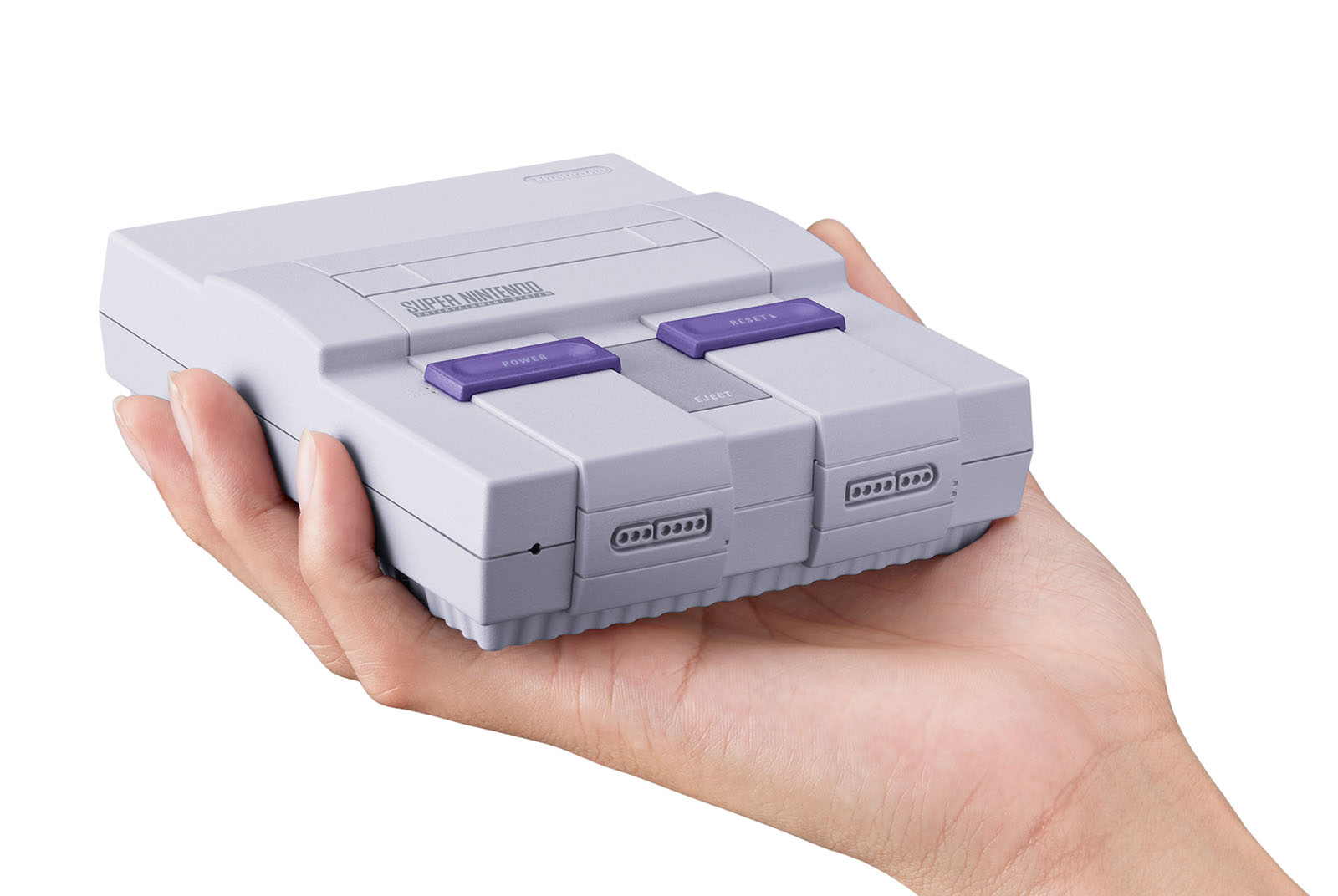Snes Classic Edition Like a Kid Again
Before Nintendo unveiled the Switch, its new hybrid game console, to the world, it rereleased an old i. The NES Archetype Edition was an adorably small box of nostalgia packed with some of the best games for Nintendo'southward original home console. Now the company is doing it again -- on September 29th, the Super Nintendo Amusement System Archetype Edition will put games similar The Legend of Zelda: A Link to the Past, Donkey Kong Land and Mega Homo X back in the living room. Hopefully, it'll do that while improving on the faults of Nintendo's outset throwback automobile.
Truth exist told, there wasn't a lot incorrect with the NES Classic Edition. With 30 of the original panel's best games pushed to modernistic TVs over HDMI, it offered an excellent, like shooting fish in a barrel-to-use retro-gaming experience. Still, it had its flaws. The console'south ridiculously short 2.5-pes controller cables forced players to sit uncomfortably close to their TVs, for case, and a few user-interface flubs made the menu weirdly difficult to access. With the SNES Classic, Nintendo has a chance to larn from its mistakes. Here are a few simple ways the company'due south new retro console tin amend on the original's failings.
Living-room-sized controller cables

This one is an like shooting fish in a barrel prepare. The NES Archetype Edition'south unnecessarily brusque controller cables made using the retro console feel weird and uncomfortable. Sitting 3 feet away from the TV screen may take been fine back in the early '90s, but today, virtually gamers would adopt to play their games from the comfort of a couch. The SNES Classic needs to have controllers that can reach across a standard-size living room with ease. And indeed, early reports from Nintendo advise the new controllers will be longer -- just if Nintendo gives players the option to sit back and game comfortably, it'll have to set the NES Classic's other big flaw, as well:
Add a carte button
As awful as the NES Classic Edition'due south short controller cables were, they had a single upside: They ensured the player was ever within arm's reach of the console'southward reset push button -- which was the only fashion one could access the system menu to change games or save and load restore points. It was a choice that felt like a glaring design oversight, particularly when you learned that Wii Classic Controllers and third-party gamepads could recollect the menu with the bear on of a button. Adding a home button to the SNES Classic controller (or using a push button combination to telephone call up the bill of fare) would go a long way toward creating a more user-friendly retro-gaming experience.
Put game manuals on the console

One-time video-game-instruction booklets are like niggling time capsules -- they're filled with gorgeous artwork, expanded story data and often, essential gameplay tips. The NES Archetype had a menu choice for game manuals, but it simply brought upwardly a QR code for accessing them online. Considering some of the games on the Classic couldn't be completed without hints in the transmission (read: Startropics), it was a fleck of a letdown to find they weren't technically included with the console. Making manuals natively accessible in the SNES Archetype Edition menu would be a prissy upgrade.
Let us add together more than games
As great equally Nintendo's throwback NES console was, it still felt limited past its library. Aye, the thirty games the Classic came with were all great, but if your favorite game wasn't already part of that library, information technology never would be. At least not officially. Giving buyers a way to add more games to the SNES Archetype Edition would increase its value exponentially. Nintendo would merely need to add together a wireless radio or a companion PC app that could download games to the panel over USB.
This upgrade is even more of import for the SNES Archetype, which comes with fewer games congenital-in than its predecessor. Sure, the SNES Archetype has 4 times as many RPGs -- ensuring hours upon hours of playtime -- but 21 games just doesn't experience like enough. Don't count on getting a library upgrade, though. Like its predecessor, the SNES Classic is probably designed to have a short shelf life, which brings us to the Classic Edition panel line'southward biggest problem:
Make enough consoles for everyone

Despite being a nostalgic toy designed just for the holiday season, consumers responded to the NES Classic equally if it was a brand-new, fully-fledged game console. Lines stretched effectually corners outside of electronics stores, and scalpers hoarded the consoles for afterwards auction on eBay. Supply of the NES Classic never caught upwards with need, and Nintendo pulled the product from market less than a year subsequently information technology launched.
For almost fans, this was the biggest point of contention -- Nintendo had created something they badly wanted, but made it almost impossible to obtain. The company put out statements acknowledging the need, and then canceled the product in response. The SNES Classic'south outlook appears only marginally improve: Nintendo says it plans to produce more of the console than its predecessor, merely won't commit to standing production past the end of 2017.
At the end of the solar day, nosotros know that if Nintendo fixes none of the NES Classic'southward faults, its Super Nintendo follow-up will probably still exist a striking. It has 20 of the SNES's almost pop and iconic games built into it, plus Star Fox ii -- a sequel that was mostly finished in-house, but never made it to market. It's already destined to be a highly sought-after collectable, and a worthwhile prize for anyone who picks one upwardly. Assuming, of course, they can find one.
All products recommended by Engadget are selected by our editorial team, independent of our parent visitor. Some of our stories include affiliate links. If y'all buy something through one of these links, we may earn an chapter commission.
Source: https://www.engadget.com/2017-06-26-how-to-make-the-snes-mini-great.html
0 Response to "Snes Classic Edition Like a Kid Again"
Post a Comment